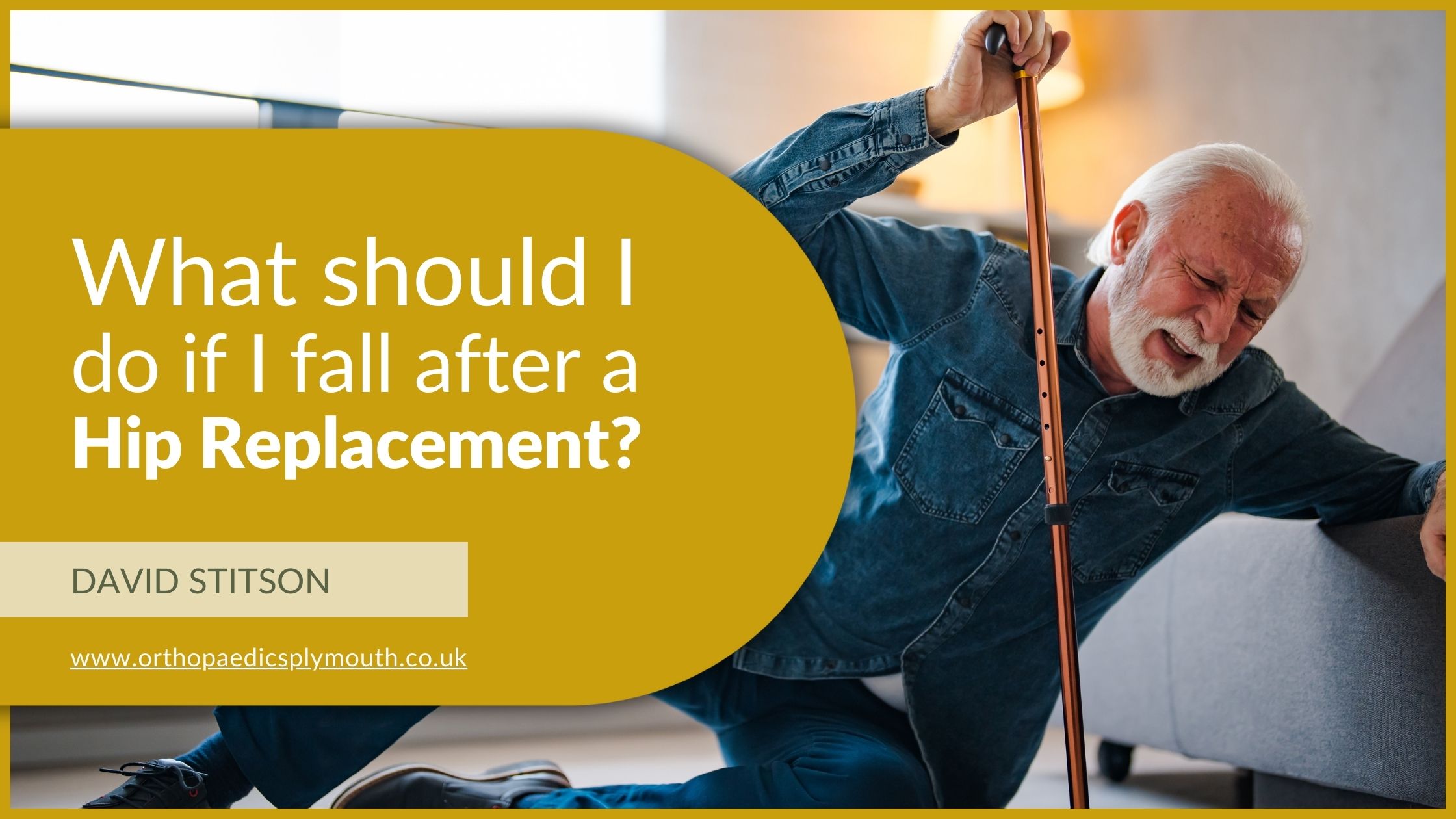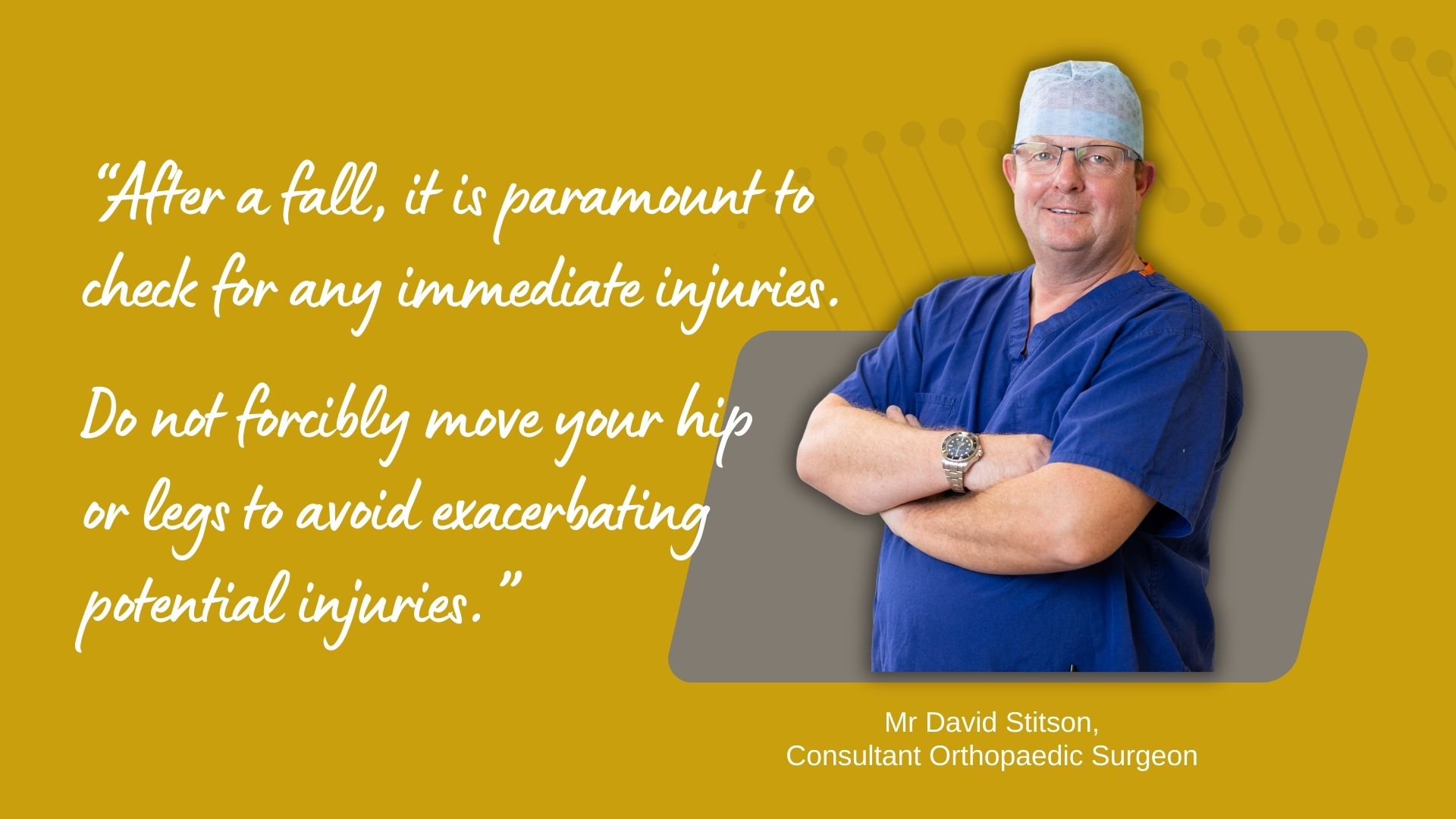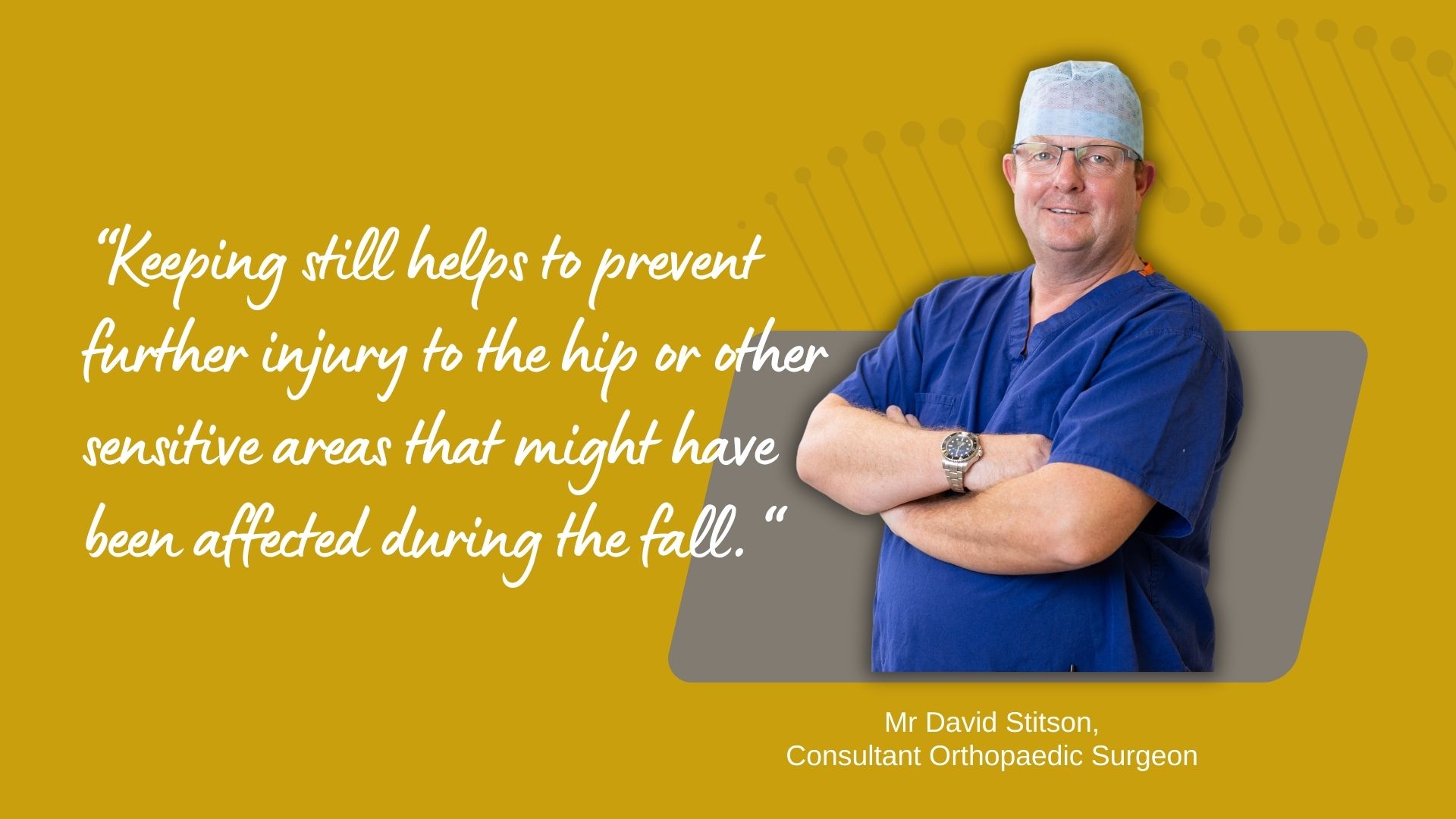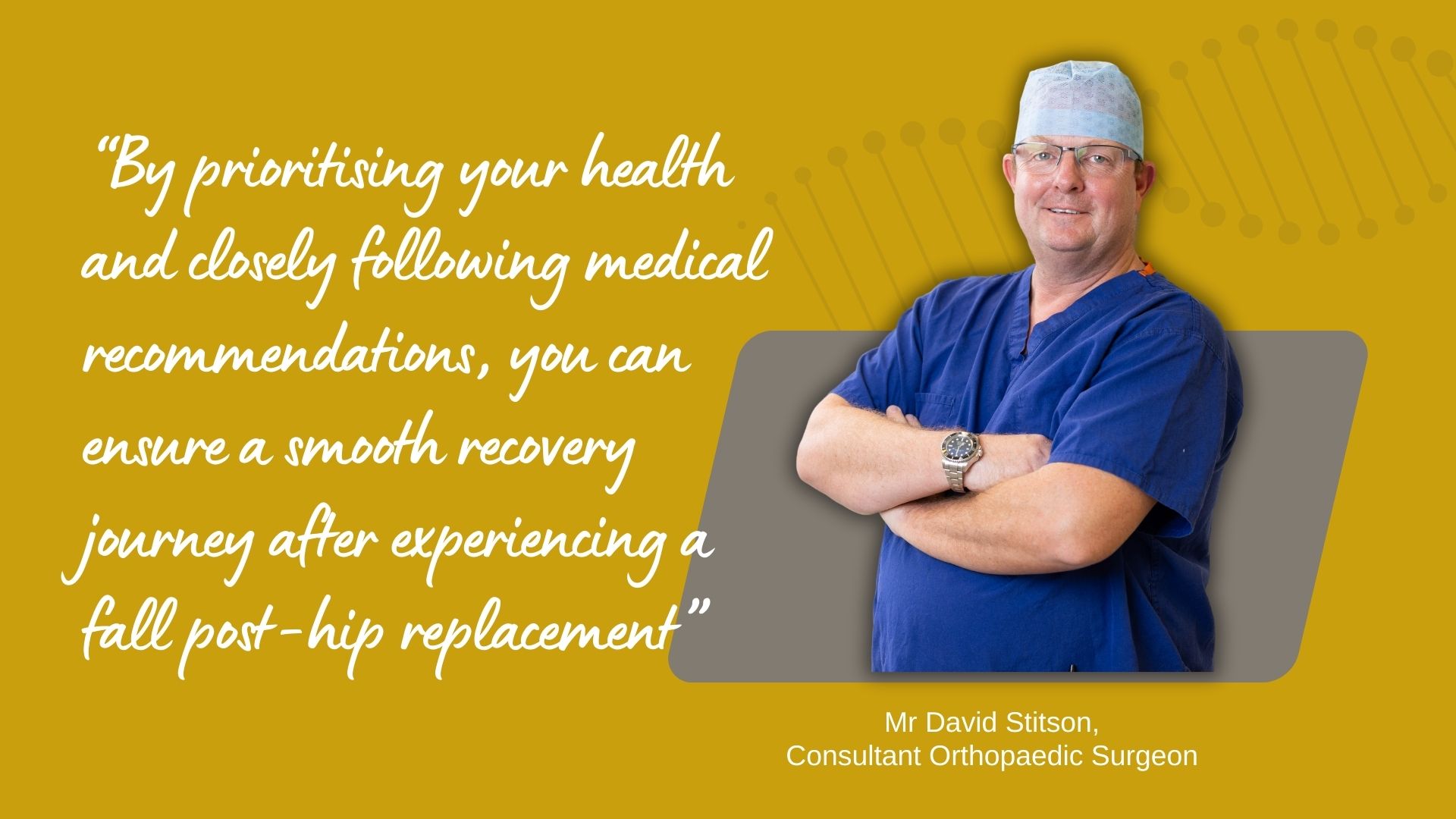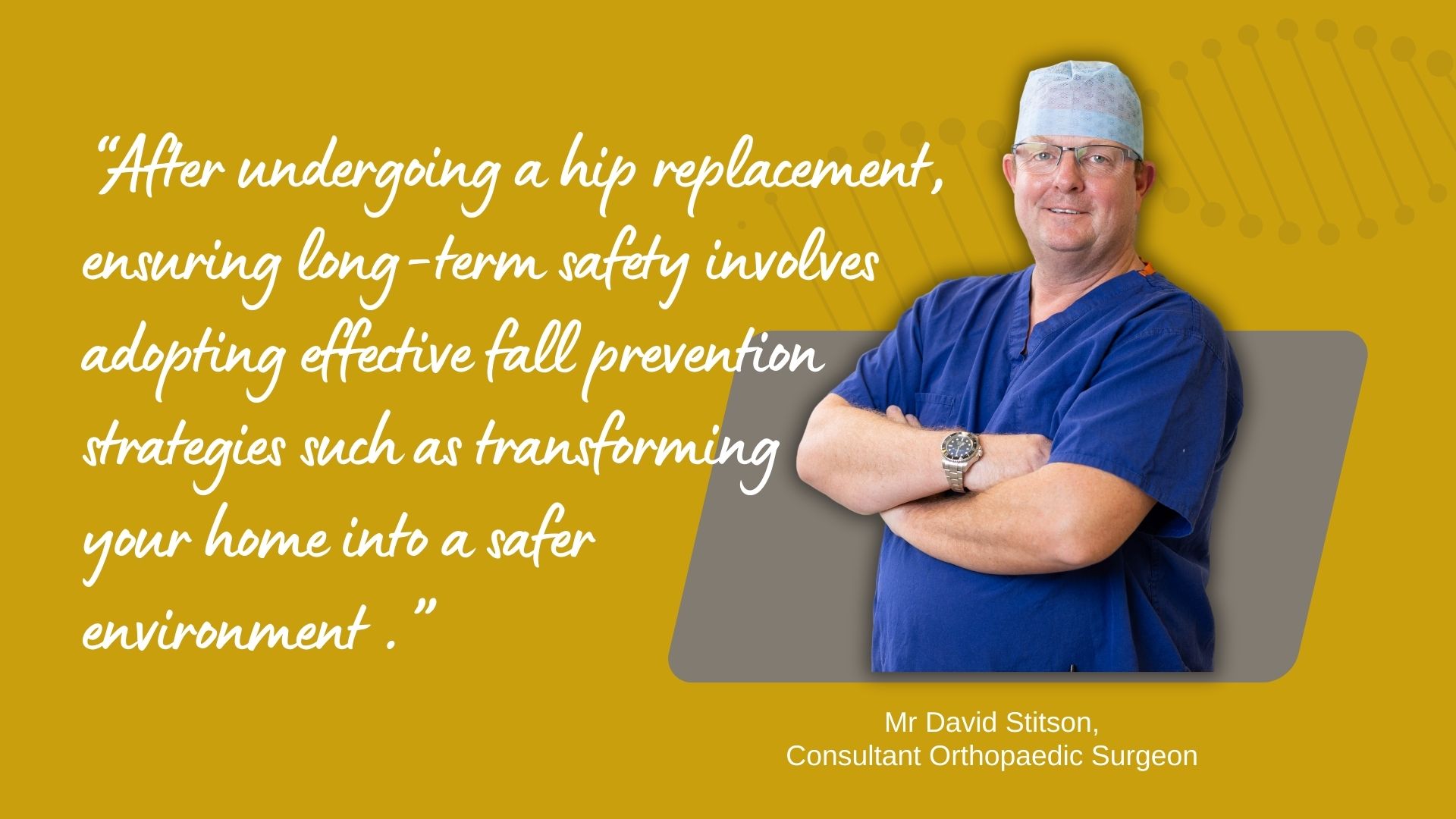Experiencing a fall after having a hip replacement can be a worrying event.
Such an incident may lead to anxiety about the potential harm to your new joint, or even cause damage. It is essential to stay calm and compose yourself as you assess the situation.
Contents
ToggleUnderstanding the proper steps to take can help mitigate risks and promote recovery. This guide will provide practical advice on what to do immediately after a fall and the necessary actions to ensure your safety and recovery.
Assess the Situation
Experiencing a fall after hip replacement surgery can be troubling, but knowing how to respond is crucial for your safety and recovery. The initial step involves assessing your current situation carefully.
Check for Immediate Injuries
After a fall, it is paramount to check for any immediate injuries. Focus on any sharp or unusual pain in your hip, leg, or other parts of your body. Look for any visible signs of injury such as swelling, bruising, or deformities. Try to move your limbs gently to identify any areas that may have been impacted. Remember, it is important not to forcibly move your hip or legs to avoid exacerbating potential injuries. If you suspect a new injury or something doesn’t feel right, prepare to call for additional help.
Contact Emergency Services
If you suspect that you have sustained a serious injury or are in considerable pain, it is important to call emergency services immediately. Even if you think you might be able to manage on your own, err on the side of caution. Professional medical help is crucial to perform a proper assessment and provide appropriate care. If you are unable to make the call yourself, enlist someone nearby to assist you in contacting emergency services.
3 Immediate Steps to Take Post-Fall
Once the situation has been assessed, there are immediate practical steps to take following a fall. These actions are aimed at ensuring your safety and minimising potential complications.
1. Stay Calm and Still
The first and foremost action is to stay calm and remain still.
Panicking can lead to hasty decisions that might cause further harm. Try to breathe deeply to help manage stress and anxiety. It is recommended to remain still and avoid any sudden movements, especially if you suspect an injury. Keeping still helps to prevent further injury to the hip or other sensitive areas that might have been affected during the fall.
2. Alert Someone Nearby
If you are able, alert someone nearby as soon as possible.
This could be a family member, friend, or neighbour who can provide immediate assistance and help in contacting medical professionals if needed. Use your voice to call for help or utilise any medical alert system you might have in place. Having someone on hand can be comforting and ensures you receive timely help.
3. Slowly Move to a Safe Position
Once you have determined whether you can move, carefully attempt to shift into a safe position.
This might include lying flat on your back or side to relieve any immediate discomfort or prevent compounding injuries. Utilise any supportive surfaces or objects nearby to assist in carefully redistributing your weight without compromising your safety. If help is on the way, stay as comfortable as possible without attempting to stand or walk until professional guidance is given.
Taking these immediate actions post-fall is instrumental in ensuring your safety and aiding in a smoother recovery process after a hip replacement surgery. Maintaining awareness and preparedness will aid significantly in preventing complications and receiving the necessary care swiftly.
Seek Medical Evaluation
Experiencing a fall after undergoing a hip replacement can be a distressing event, and it is crucial to act promptly to ensure the best possible outcome. Here are the vital steps for medical evaluation:
Visit Your Doctor or Hospital
Immediately after experiencing a fall, it is essential to seek medical assistance without delay. Even if the fall seems minor and you feel no immediate pain, it is important to remember that the impact may have caused internal injuries that are not immediately apparent. Visiting a doctor or the emergency department allows healthcare professionals to conduct a thorough examination to rule out any serious damage that may require immediate attention.
Follow Medical Advice
Once you have been assessed by medical professionals, it is important to adhere strictly to the advice given. This advice may include recommendations for rest, specific movements to avoid or instructions to use mobility aids such as a crutches or walking stick. Ensuring that you follow these guidelines can prevent further injury and aid in the healing process. Trusting your healthcare provider’s expertise is crucial in ensuring that your recovery is on the right track.
Discuss Possible Imaging Tests
In some cases, your healthcare provider may suggest imaging tests like X-rays, CT scans, or MRIs to get a closer look at the hip joint and surrounding tissues. These tests can identify fractures, dislocations, or other issues that might not be visible through a simple physical examination. Discuss the benefits and any concerns you might have about undergoing these tests to ensure you understand how they will aid in assessing your injury accurately.
It is essential to discuss all your options with Mr Stitson, who can guide you through the treatment process and advise on how you can achieve the best possible outcome.
Post-injury Care and Rehabilitation
Once you have sought medical evaluation and received a treatment plan, focusing on post-injury care and rehabilitation is key to promoting recovery and preventing further incidents.
Follow-Up Appointments
Schedule and attend all follow-up appointments with your healthcare team. These appointments are crucial in monitoring your progress and adjusting your recovery plan as necessary. Consistent follow-up allows your healthcare provider to catch any potential issues early and make timely interventions. It also provides you with an opportunity to ask questions and seek clarification on any aspects of your recovery process.
Adhere to a Rehabilitation Plan
Engaging in a structured rehabilitation plan is fundamental to regaining strength, enhancing mobility, and preventing future falls. This plan may involve physiotherapy sessions focused on exercises to strengthen your hip joint and improve balance and coordination. Ensure to perform all prescribed exercises at home as instructed by your therapist to maximise the benefits of your rehabilitation programme.
Monitor for Signs of Complications
Remain vigilant for any signs of complications that might arise during your recovery. These could include symptoms such as increased pain, swelling or redness around the hip area, fever or any unusual discharge. Such symptoms should be promptly reported to your healthcare provider as they may indicate an infection or other complications requiring immediate attention.
By prioritising your health and closely following medical recommendations, you can ensure a smooth recovery journey after experiencing a fall post-hip replacement, effectively safeguarding your progress and well-being.
Long-Term Fall Prevention Strategies
After undergoing a hip replacement, ensuring long-term safety involves adopting effective fall prevention strategies. These measures not only promote your well-being but also enhance your confidence in your daily activities.
Home Safety Modifications
Transforming your home into a safer environment is a vital step in fall prevention. Begin by removing tripping hazards such as loose rugs and cluttered pathways. Ensure that all areas are well-lit, especially staircases and hallways. Consider installing grab bars in the bathroom near the toilet and shower as well as railings on both sides of staircases. Non-slip mats in the bathroom and kitchen can provide additional security. In addition, reorganising frequently used items so they are easily accessible can reduce unnecessary reaching or bending.
Regular Exercise and Strengthening
Engaging in regular exercise tailored to your needs can greatly reduce the risk of falls. Focus on exercises that improve balance, flexibility, and strength. Gentle activities like walking, swimming, or stationary cycling can be beneficial. Working with a physiotherapist to develop a customised exercise regimen can address your specific health needs and limitations. Strengthening the muscles around your hip and improving your overall body coordination will contribute significantly to reducing fall risks.
Use of Assistive Devices
Assistive devices can offer additional support in maintaining stability and reducing the likelihood of a fall. Depending on your individual needs, these may include walking sticks, walkers or grabbers (to pick up items off the floor). A properly fitted assistive device can greatly enhance your mobility and confidence. Consult with Mr Stitson to find the most suitable options and ensure they are adjusted correctly for your height and requirements. Regularly inspect your devices to ensure they are in good condition and safe to use.
Next Steps
After experiencing a fall post-hip replacement, it is crucial to follow structured steps for recovery:
– Consult with Mr Stitson: Schedule an appointment to assess any potential damage to the hip implant or surrounding areas. Mr Stitson can provide specific recommendations for care.
– Engage in Physiotherapy: A physiotherapist can assist with tailored exercises to strengthen muscles, enhance balance, and reduce future fall risks.
– Modify Your Environment: Identify fall hazards in your home. Consider installing grab bars, using non-slip mats, and ensuring adequate lighting throughout.
– Adopt Fall Prevention Strategies: Wear supportive footwear, remain cautious on uneven surfaces, and consider using assistive devices if necessary.
Staying proactive with these steps will help ensure your safety and support your journey to recovery.

About Mr Stitson
David Stitson is a Plymouth-based Consultant Trauma and Orthopaedic Surgeon. Trained both in the UK and internationally, he has worked in medicine for more than 20 years for the NHS, for the Royal Air Force and in private practice. Mr Stitson operates privately at the Nuffield Health Hospital, Plymouth.

The Nuffield Plymouth CQC Rating
The Nuffield Hospital has a history that spans over half a century and has built a reputation for high standards of care, professionalism and expertise in delivering health services. They aim for continuous quality improvement in everything they do.
Active Quality and Governance programmes are in place at the Nuffield Hospital Plymouth. As part of this, the hospital is inspected by independent healthcare regulators to ensure it meets the fundamental standards of quality and safety as determined by the regulating body (CQC).
In the most recent inspection, Plymouth Nuffield Hospital was rated as ‘Good’ overall, however, the surgical element of the inspection was rated as ‘Outstanding’. The hospital was referred to as:
“Outstanding in effective and caring, and
Good in safe, responsive and well-led.”

